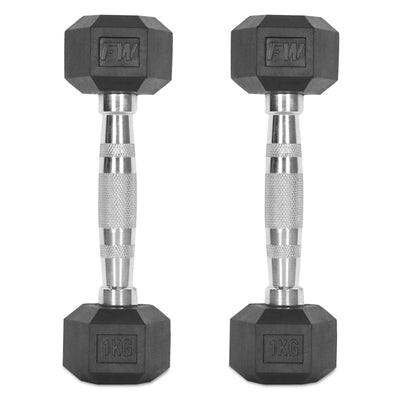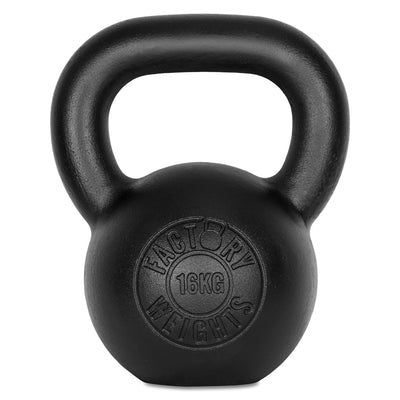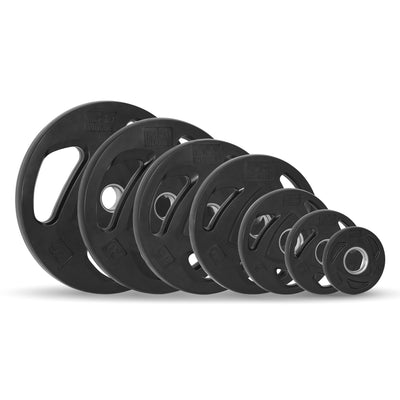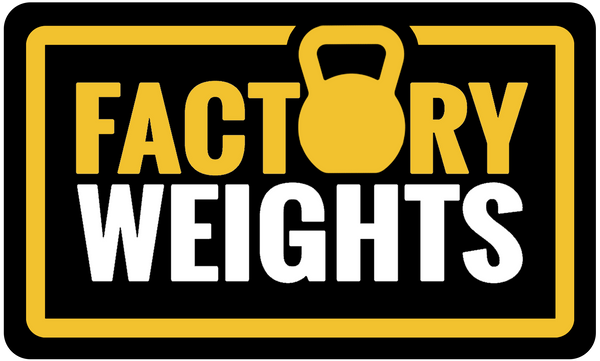Bumper Plates vs Steel Plates
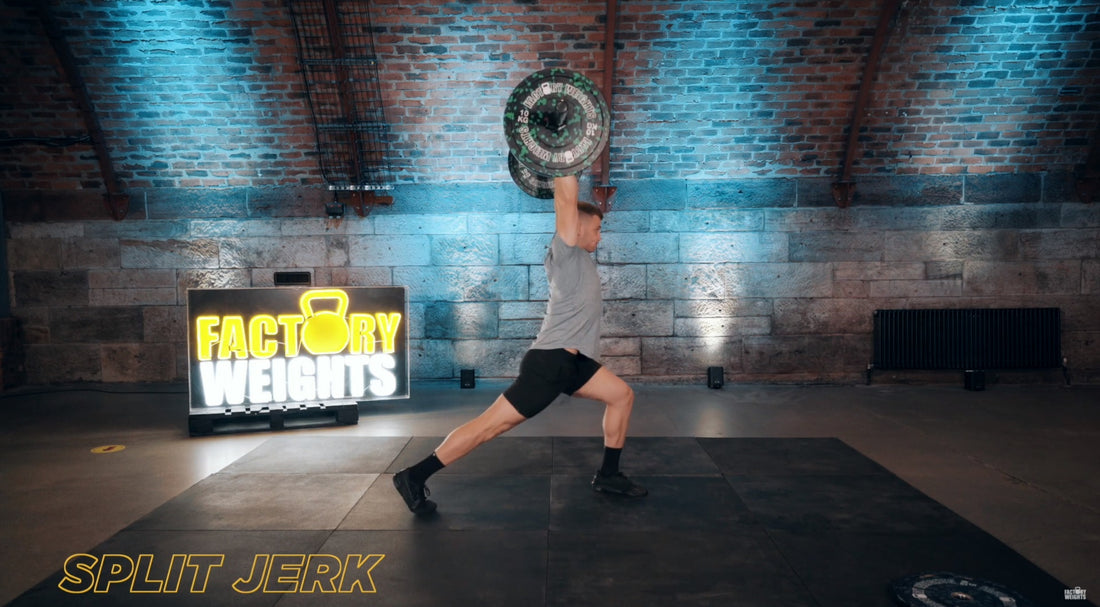
If you are someone who is a weightlifter, Olympic lifter, or CrossFitter, you should know that the type of weight plates that you use matter, and you need to use specific types based on what you are doing, and where you are doing it.
Weight plates are made out of a variety of different materials, that all do have a place and purpose. In this article, though, we will be discussing the two most common types, bumper plates vs steel plates.
In this article, we will be discussing the differences and or similarities between bumper and steel plates. We will also explain who can use them, when they should be used, as well as when they should not be used.
Bumper Plates versus Steel Plates (Compared)
|
Bumper Plates |
Steel Plates |
|
|
Material |
Rubber or urethane with steel insert |
Steel |
|
Noise Levels |
Quieter |
Louder |
|
Able To Be Dropped? |
Yes |
No |
|
Suitable To Be Used For Weight Lifting? |
Yes |
Yes |
|
Suitable To Be Used For Olympic Lifting? |
Yes |
No |
|
Suitable To Be Used For CrossFit? |
Yes |
No |
|
Thickness |
Thicker |
Thinner |
|
Diameter |
Constant |
Varies |
|
Price Range |
More expensive |
Cheaper |
Materials
For those wondering “What are bumper plates?”, bumper plates are weight plates that have a steel insert, but are predominantly made out of a urethane or rubber material that provides a thick coating to the steel insert.
Steel plates are simply just made out of solid steel.
The thick urethane or rubber coating of the bumper plates, which makes up the majority of the bumper plate’s weight, is very beneficial in many ways, which we will be discussing below.
Steel weights tend to chip easily and have a lot of drawbacks due to their lack of coating.
The coating that bumper plates have makes them a lot more appealing and efficient to use, which results in them being most people’s first choice when choosing weight plates.
Noise & Vibration
The rubber or urethane composition of bumper plates makes them much quieter when putting the weight plates on and off the barbell, and also much quieter if they happen to fall.
The vibration caused by bumper plates both when they knock together during lifting or when they hit the floor is also much less than what steel plates produce.
These two factors tend to make bumper plates a much more popular option for home gyms, as they can be used quietly without disturbing the other people in the house.
Safety
Bumper plates are the best weight plates when it comes to safety.
If you are doing Olympic lifts or CrossFit, you normally have to put the weights down quite forcefully and drop them down to the floor from overhead.
The rubber or urethane coating of bumper plates provides shock absorption, which means that they are safer for your floors, as they will be a lot less likely to cause damage to them or cause them to crack.
They are also safer than steel plates if they unintentionally fall on something or someone. Their rubber coating will result in them causing a lot less damage and harm to the item they fell on.
Steel plates are completely safe when it comes to weight lifting and bodybuilding, though, and are a great option to use for this mode of training.
The only time you need to be careful with them is when a movement requires them to be dropped, for anything else there is no need to worry.
Types of Lifting
Both steel plates and bumper plates can be used for weight lifting and resistance training, but it is highly recommended that only bumper plates are used for Olympic lifting and CrossFit.
When doing Olympic lifts and CrossFit, it is common that you drop the bar from overhead quite frequently. The goal is to try and push yourself, and this means occasionally failing at a lift and dropping the barbell and weight plates.
Although this is not always intentional, it is bound to happen. Bumper plates are able to be dropped on the floor from overhead, and the plates won’t crack or cause too much damage to the floor.
Steel plates, on the other hand, are likely to crack and cause a lot of damage to your floors if they are dropped from overhead, so they are not ideal to be used for Olympic lifting or CrossFit.
Steel weights are a great option to use for resistance training and bodybuilding. Since you can usually load more steel plates on the bar they work really well for strength training

Thickness
Steel plates are usually thinner than bumper plates are.
Ideally, you want your weight plates to be as thin as possible so that you can fit a lot more weight onto your barbell. So, if you are wanting to load very heavy weights onto your barbell, steel plates might be a better option.
But it is also important to note that while standard bumper plates are thicker than steel plates, you can get bumper plates that are thinner, they just cost a bit more.
So depending on what your goal is and how much you would like to load your barbell, make sure you choose a weight plate type that will meet your goal.
Price Range
Generally, steel plates are quite a bit cheaper than bumper weight plates and are something that puts quite a few people off of purchasing bumper plates.
A lot of people see the prices and ask “Why are weight plates so expensive?”, and then opt for the cheaper option to save money.
But this isn't always the best option. While steel plates are cheaper, they are a lot less versatile and safe. So sometimes it is worth spending a little bit more money on bumper plates to get what you want out of your purchase.
Purchasing bumper plates will be an investment that will literally last you a lifetime due to their durability and versatility.
Here at Factory Weights, we also have some very affordable bumper weights that you can invest in.
Bumper Plates or Steel Plates?
Both of these weight plates come with a variety of advantages and disadvantages that we will discuss below. Although there is one that has more advantages than the other, the weight plate that is best for you ultimately comes down to what your goals are and which of these weight plates suit them best.
Bumper Plates
While bumper plates are slightly more expensive than steel plates, they are much more versatile, durable, quiet, safe, and are able to be used for a variety of different lifting types.
Bumper plates are the best type of weight plates to use in a home gym due to how quiet they are, and because they are a lot safer for you, your floor, and other equipment than steel plates.
Additionally, bumper plates are the only weight plates that can be used for Olympic lifting, and CrossFit. This is because they are safe to drop on the floor, which is a common occurrence with these two sports.
It is also important to note that bumper plates can also be used for resistance training and weight lifting like most other weight plates can.
A great tip to remember is that the best bumper plates have more of a matte finish as opposed to being shiny. The more shiny the bumper plate is, the more likely that cheaper, low-quality, products have been used to make it.
Bumper plates are definitely with the extra pennies and are an investment that will last you a lifetime because of how durable they are.
Why It’s Great
- They are safe
- They are durable
- They can be dropped from overhead
- They are perfect for use in a home gym
- They can be bought in different colours
Who It’s Right For
- Olympic weightlifters
- People who do CrossFit
- People looking to start a home gym
Steel Plates
Steel plates are made out of solid steel. They are very durable as they will require a lot of effort and force for them to chip or break.
Steel plates make a lot more noise than bumper plates do, and can’t be dropped from overhead like bumper plates can.
They are not very ideal for home gyms, due to their noise and low level of safety. Floors of home gyms also tend to be more susceptible to damage from steel weight plates.
These weight plates can’t be used for CrossFit or Olympic lifting, which makes them a lot less versatile than what bumper plates are.
Usually, lighter steel weights also have a smaller diameter. While this won’t bother you for upper body exercises, or squats and lunges, it makes deadlifts more of a mission as you have to use blocks while lifting.
The advantage of steel plates is that they are a lot cheaper than bumper plates. They are also thinner than bumper plates, which means that you can fit more weight plates on the bar, which is important for weight lifters who want to lift heavy.
Why It’s Great
- They are cheaper
- They are thinner and can fit more weights on a bar
- They are durable
- They will last for a long time
Who It’s Right For
- People who are weight lifters
- Weight lifters who want to lift extremely heavy weights
- Those shopping on a budget
Conclusion
As you can see, both types of weight plates are perfectly good plates, and if weight lifting is your goal, then they will both be a great choice.
But when it comes to wanting to specialize in Olympic lifting and CrossFit, then it’s safe to say that bumper plates will be a much more beneficial option to go with.
When choosing the right one for you, it is about assessing what you are going to be using the weight plates for, what your budget is, how heavy you will be lifting (as this indicates how many you will have to buy), as well as what your personal preferences are.
Bumper Plates And Steel Plates (FAQ)
Does The Diameter And Width Of The Weight Plates Matter?
This depends on what you are using the weight plates and barbell for.
Firstly, it is important to take into account that the diameter of bumper plates is usually all the same, but the diameters of steel plates differ based on what the weight is.

The width of bumper plates goes up as the weight increases. Steel plates tend to start off with a very small width for lower weights, then it increases slightly, and tends to stabilize once it has reached a certain point. As we mentioned earlier, steel plates have a thinner width in general.
To go back to the question, the reason why it is important to mention the above is that if you are using the weight plates for Olympic lifting and CrossFit, then it is definitely important that they are the same diameter.
This is important in case you drop the bar, and is another reason why steel plates can’t be used for Olympic lifting or CrossFit.
With weight lifting, the diameter of the weight plates is not important as long as you have a barbell collar keeping them in place.
The only time width is hugely important is when you are trying to fit a lot of weight on your bar. You want the weight plates to be thinner so that more can fit on. In this case, steel plates are more beneficial.
Can I Load Bumper Plates And Steel Plates Onto The Same Bar?
If you are going to be using it for CrossFit or Olympic lifting, then definitely not. If you are going to use it for weight lifting you can get away with it, but it is still not something we would recommend.
The reason for this is that bumper plates and steel plates have different diameters. If you drop the bar and the weights, either intentionally or unintentionally, the impact from the fall will go solely into the weight plate with the largest diameter as it will hit the floor first.
This will cause a lot of wear and tear on the plate and will shorten its lifespan.
The reason we say that you could get away with it with weight lifting is that you don’t drop the barbell from so high and so often as you do with CrossFit and Olympic lifting. But, the weight plates do still get lowered very forcefully to the floor, and if the one with the bigger diameter is going to keep taking the impact, it won’t last that long.
Is Rubber Or Urethane Coating Better For Bumper Plates?
Generally, utherane is a harder substance than rubber and is the superior option.
Urethane is extremely durable and resistant, much more so than rubber. This is particularly important due to how often bumper plates get dropped.
While rubber has more elastic memory, urethane plates have dead bounce which stops them from bouncing too high when dropped, which is what a lot of rubber plates do.
Urethane can also be produced in lots of different, vibrant, and bright colours, whereas rubber plates can usually only be black.
So, all in all, urethane tends to be the better option if you have the choice. But if you don’t, rubber isn’t a bad option at all.
Why Are Steel Plates Designed To Be Thinner Than Bumper Plates?
Technically, steel plates aren’t actually purposely designed this way. The reason that they are mostly thinner is that steel is a lot denser and heavier than rubber or urethane.

Because steel plates are only made out of steel, and steel is a lot heavier than rubber, a lot less is required to make up weight than what would be if it was a rubber bumper plate.
For example, to make up a 5 kg weight plate, you would need a lot less steel than you would rubber. This is why steel plates tend to be thinner and have a smaller diameter. It is simply to accommodate the weights they have to reach without making the diameter too small.
Is It Easier To Lift Steel Plates Or Bumper Plates?
Bumper plates are much easier to lift than steel plates. Since bumper plates are wider than steel plates, they cause the bar to bend more than steel plates do.
This bit of bend and added wobbliness decrease the amount of mechanical effort that you have to put in while you are lifting, making it much easier to do.
Steel plates cause the bar to stay rigid and require you to put a lot more effort in to lift them. And, if you are aiming for a personal best, you want to conserve as much energy as possible, to get to a higher weight.
Did you find our blog helpful? Then consider checking others:
- Barbell Vs Kettlebell
- Best Barbell Set
- Best Dumbbells
- Dumbbell Chest Exercises
- Dumbbell Exercises
- Best Adjustable Dumbbells
- Guide To Buying Dumbbells
- Different Types Of Dumbbells
- How To Build A Big Chest With Dumbbells
- Chest Exercises For Women With Dumbbells
- Inner Chest Workout With Dumbbells
- Lower Chest Exercises With Dumbbells
- Dumbbell Chest Exercises Without A Bench
- Dumbbell Exercises For Cyclists
- Dumbbell Exercises With An Exercise Ball
